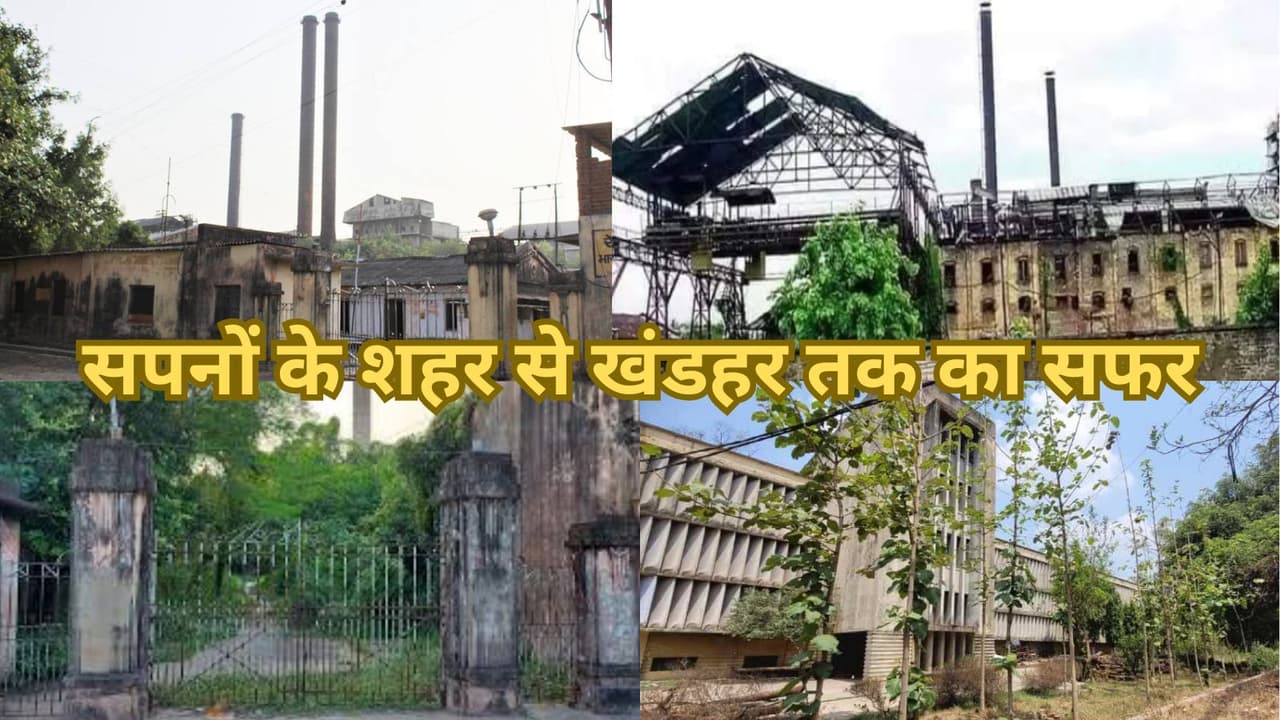Dalmianagar in Bihar, which was once the largest industrial city in Asia, is now in ruins. This industrial township, established by Ramakrishna Dalmia in 1933, had many industries. It closed in 1984 due to financial irregularities and labor movements.
Patna: There was a time when Dalmianagar, located in Dehri on Sone in Rohtas district of Bihar, was a shining star on the industrial map of India. Today it has become a ruin and is lost in the darkness of oblivion. The deserted roads and walls of closed factories here are silently testifying to that lost golden era.
The foundation was laid in 1933
The story of Dalmianagar begins in 1933, when Ramakrishna Dalmia established a sugar mill here under Rohtas Industries Limited. Coming from a small village in Rajasthan, Ramakrishna Dalmia reached Calcutta and then Bihar. To give shape to his dreams, he chose the unknown villages situated on the banks of river Son. Here resources like limestone, sugarcane, railway connectivity and Son River were enough to give flight to his ambition. In such a situation, he bought the land of dozens of villages here and set up a company named Rohtas Industries Limited. Under which units were started one after the other.
Gradually many industries like cement, paper, soap, chemical and Dalda started here. Dalmianagar became an industrial township spread over 3800 acres, containing not only factories but also schools, colleges, railway lines, staff quarters, power houses and a private airport. This township became a symbol of development and came to be known as Dalmianagar.
Was known as the largest industrial city of Asia
Netaji Subhash Chandra Bose inaugurated the cement factory here in 1938. At that time this factory was the largest single unit factory in the country. In 1939, Dr. Rajendra Prasad laid the foundation of the paper factory. At that time it had become India’s largest industrial complex. There was a time when Dalmianagar was known as the largest industrial city of Asia. Ramakrishna Dalmia’s name was counted among the biggest industrialists of the country along with Tata and Birla.
A pundit had predicted a change in fate
The story of Ramakrishna Dalmia has also been quite interesting. A pundit from Rajasthan had predicted that his luck would change and so it happened. He made a profit of Rs 1.5 lakh from a silver deal. After this he entered the industry. From Calcutta to Patna and then to Dalmianagar, he achieved success everywhere with his business acumen.
Had good friendship with Mohammad Ali Jinnah
After becoming a successful industrialist, Ramakrishna Dalmia started meeting many politicians of the country. Ramkrishna Dalmia’s daughter Neelima Dalmia, while giving an interview to a YouTube channel, had said that only her father RK Dalmia could have stopped the partition of India because he was very close to the founder of Pakistan, Mohammad Ali Jinnah. Ramakrishna Dalmia had bought Mohammad Ali Jinnah’s Delhi house in 1947. In the same interview, Neelima also said that the then Prime Minister Jawaharlal Nehru did not like Ramakrishna Dalmia.
beginning of fall
After three decades of prosperity, everything started changing in the 1960s. Dalmia Group started being accused of financial irregularities. Then the then Prime Minister Jawaharlal Nehru constituted a committee under the chairmanship of Supreme Court Judge Vivian Bose to investigate the Dalmia-Jain Group. Financial irregularities came to light in the investigation. In the year 1995, MP Firoz Gandhi had also raised questions in the Parliament regarding the scam in Dalmia Group.
The company closed down in 1984
Meanwhile, caste violence and labor movements in Bihar further worsened the condition of the industry. In the 1970s, power cuts, Naxalite movement and deteriorating law and order situation forced the workers and managers of Dalmianagar to migrate. The company closed down in 1984 and was declared bankrupt.
An attempt was made to revive the company
In the 1990s, efforts were made to revive this industrial sector. On the instructions of the Supreme Court, the Bihar government also provided assistance of Rs 35 crore, due to which work started in the company’s cement factory. But this factory could not run for more than two years. In 2007, when Lalu Prasad Yadav was the Railway Minister, he started the railway freight bogie manufacturing project, for which the paper mill land of Rohtas Industries Limited was purchased, but
Today’s Dalmianagar
Today the remains of Dalmianagar remain only in ruins. There are disputes going on in the courts regarding its property. In 2020, Railways approved the budget for repair work, but till date no work has started. His story still breathes in the desolation of Dalmianagar. The voices echoing in the ruins remind us that as difficult as it is to realize dreams, it is even more difficult to preserve them.
